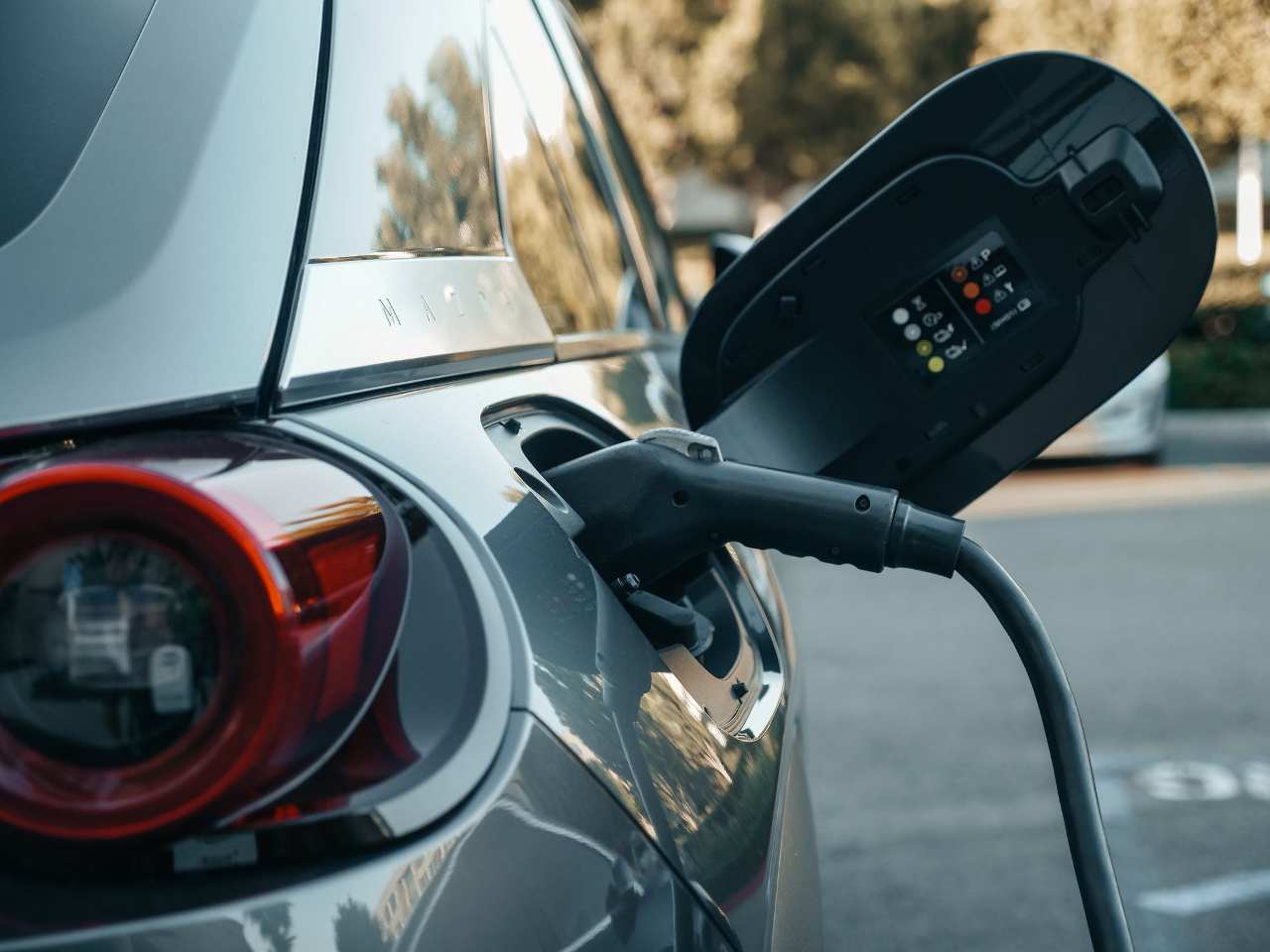Every new driver has likely shared one common experience. You’ve just passed your test and started driving your first car on your own. When you began driving your car, it had a full tank of fuel, so you haven’t had to visit a petrol station and fill it up just yet! Something is eating away at you in the back of your mind as the fuel gauge begins to tick down to zero – how do I use the fuel pump when the time comes to fill my car up for the first time?
From not knowing how to remove the fuel cap to being unsure what kind of fuel your new car uses, using a fuel pump for the first time can be a scary experience, not least due to the impatient driver behind you watching your every move. Now, with the popularity of electric cars growing every day, there’s a new kind of anxiety on UK roads – and that’s using an EV charging point for the first time in a public destination such as a supermarket or shopping centre.
That’s why Vanarama has created our public EV charging point ‘anti-embarrassment’ guide. Make the first time you charge your new Tesla Model 3 or Honda E in public a good one by following our 5-step guide below.
What Types Of EV Charging Points Are There?
Although the steps of charging your EV at a public destination don’t tend to change depending on the location and manufacturer, there can be some differences to keep in mind. Most charging points you’ll find when you’re on the go will be a mix of fast and rapid charging and feature three types of connectors:
· AC (Type 2): Typical connector on new cars.
· CCS: High-powered charging.
· CHAdeMO: The original direct current (DC) connector.
Type 2 will tend to be powered by alternating current (AC). CCS and CHAdeMO will tend to be direct current (DC).
What Types Of EV Charging Point Connectors Are There?
It’s extremely important that you know what type of charging point connector your EV uses before the time comes to charge it up. Think of this as knowing your petrol from your diesel when filling up a conventional, combustion-powered car.
How To Use An EV Charge Point Step-By-Step
Here’s what the charging point connectors will look like in real-life as you approach:
In our 6-step guide, we’ve used a rapid charging PodPoint as an example, but most electric charging points in the UK will follow a similar method of charging your car. So don’t worry if your local public destination charging points look a little different – the steps below will be the same.
Step 1: Park Your Car
This should be the easy part! Like parking at a petrol station, position your EV so the cap is on the side of the charging point for easy access. However, don’t worry if you’re parked with the cap on the wrong side. Electric charging points have extremely long cables so it should be able to stretch around your car to plug in the far side – but we can’t promise it will!
Step 2: Plug In The Connector
Open the cap to plug in the charging cable. Most EVs will have a locking mechanism so you may have to open this separately on the dashboard or your car key. This is another thing to plan in advance to avoid any embarrassment! Use our guide above to identify which type of connector your EV uses and insert it into the charging port.
Step 3: Go To The App Or Website
Next, you’ll be able to move forward using the touchscreen on the charging point or the app or website of the provider. Older electric charging points enable users to use a Radio-Frequency Identification (RFID) card to identify themselves, although these are increasingly being phased out. You will likely be asked to use the app. In the app, search for the specific electric charging point you’re at. This should be easy to do, as each point has a unique name and location.
This will allow you to pay for the charge at step 5, although some charging points also allow you to pay using a contactless debit or credit card.
Step 4: Select Your Connector
The touchscreen or app will now ask you which type of connector you are using. Once selected, the charging point will know which cable to supply the electricity to which will, in turn, charge your car. The touchscreen on the electric charging point will look something like this:
Step 5: Confirm Charge
You’re nearly there! The penultimate step is to confirm your charge and the electric charging point will begin charging your EV.
Step 6: Unplug Your EV
Up to this point, everything has gone so well – you don’t want to mess up now! To stop your EV from charging, revisit the touchscreen or app and press the ‘stop’ button. This is a vital step before you unplug the car to ensure your safety. Next, unlock the locking mechanism and unplug the connector from the charging port and then the charging point. Cover the charging port with the cap and you’re all done!
Does A Tesla Charge The Same Way?
In a word – yes. Although Tesla has their own, unique connector for home charging called Tesla Mobile Connector (TSM), for public charging they provide a Type 2 cable as standard with delivery. Make sure you don’t forget your Type 2 connector to avoid a potentially embarrassing episode!
Should You Make The Switch To Electric?
Now you know how to charge your EV in public without any hiccups, here are some quick-fire facts on why making the switch to electric makes sense:
· In the UK, there are now more than 42,000 charge point connectors in more than 15,500 locations.
· As of May 2019, electric car charging points now outnumber petrol stations, and the gap is growing every year.
· At the end of May 2021, 300,000 all-electric cars were registered on UK roads and more than 600,000 plug-in models including PHEVS. It’s the fastest-growing market segment by far.
· October 2021 was a record month for EV registrations, with one being registered every 79 seconds.
· The average driver will save around £1,000 in fuel costs alone when they make the switch to electric.
If our ‘anti-embarrassment’ EV charging guide has convinced you that going electric is the right move for you, Vanarama is the best place to find our next ride. Visit our electric car lease deals page to find the perfect EV for you. If you want to learn about how to charge your EV not just at public destinations, but at home and work, head over to our electric car charging advice page for more information.





